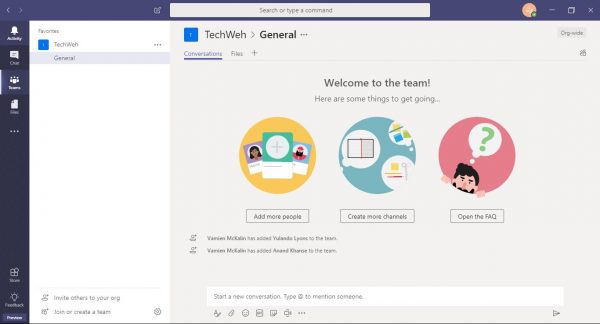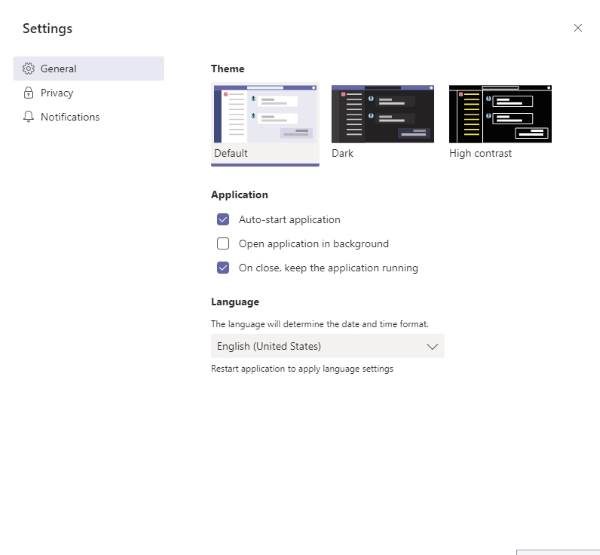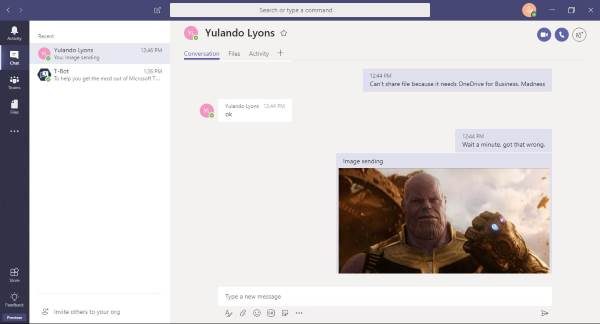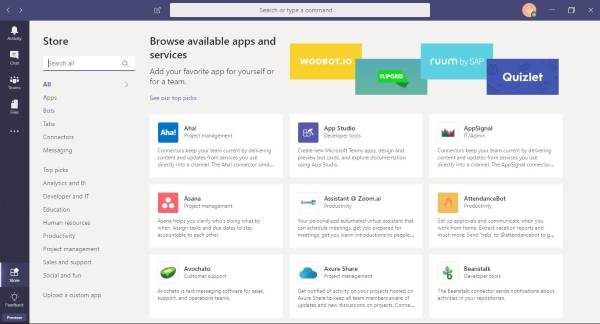Microsoft Teams is designed to compete with Slack and HipChat. At first, anyone who wanted to use Microsoft Teams would be required to subscribe to Office 365, but such is no longer the case. There’s a free version of Teams, and for the most part, it’s just as powerful as the paid alternative. Users can do everything that is important in the free version, and that bodes well for Microsoft.
Microsoft Teams Free version
We’ve been using Teams for a few days, and clearly, this is a powerful tool for any employers who want to keep things organized and moving smoothly. So, let’s get down to the nitty-gritty and talk about how to get things up and running.
Signing Up

To use Microsoft Teams, users can either download the available desktop or mobile apps or just launch it via a supported web browser. We’ve come to understand that Teams, at this point, only supports Microsoft Edge, Google Chrome, and Mozilla Firefox.
Signing up should be relatively easy, especially if you already have a Microsoft account. Just finish the sign-up page, follow the instructions, and boom, you’re good to go.
Now, for the best experience, we’d like to recommend downloading the desktop app. It works for Windows 11/10, which is great because not every business owner has upgraded their systems to the newest version of Windows.
After logging into the app with your Microsoft account credentials, you’ll be shown a welcome screen. From there, you can add a picture to your account. You can also waste no time by sending your employees invitation emails to get them onboard.
The user interface

We should also mention that the interface has a standard blue, grey, purple, and white theme. However, if you’ve enabled Dark Mode on Windows 10, then it’ll be mostly dark and a little bit purple.
You can change the look of the UI by clicking on your profile, Settings > General, and then choosing between three themes. Depending on your computer’s speed, changing your theme can take instant or a few seconds.
On the left, you’ll see a few icons, and beside the left pane, you’ll see the contents of any icon you’ve selected. The larger space on the right holds the contents of anything selected from the middle.
You can begin by checking the Activity section to view all of your alerts, while you can use the Chat section to respond to private messages from team members. Now, whether it be a private or team chat, you can share contents easily, which is expected so no surprises here.
Alerts and notifications
When it comes down to any chat app for business, alerts, and notifications are super important, and guess what? Teams did not fail in this regard, no sir. It’s possible to alert a person by mentioning them with @(add username here.) Folks can also follow any channel, and if you’ve been away for a while, you’ll return to see badges with numbers that represent the amount of activity that took place while you were away.
At the moment, we haven’t come across the ability to snooze notifications, but you can disable them. That’s a downside from our point of view as it would be best to snooze rather than outright disable.
Communication time

Test editing is impressive here as Microsoft aims to please both old and newer fans. The default chat design is more modern, but to get to something more appealing to us older Microsoft fans, just click on CTRL + Shift + X and it’ll bring up the Compose Box.
Compose view is better because it delivers more options to the forefront, and not to mention, it looks like older text editors and that of Microsoft Word.
Additionally, folks can upload files from the message box to anyone, and that’s both good and expected.
The apps

Ah yes, these days no major piece of software is complete without an app store, and the same can be said about Microsoft Teams. To get to the app store, simply glance at the bottom of the left pane, and click on the icon.
Here you’ll see a whole range of apps designed to improve the experience. Just search for the app you want, click on it, install, and you’re good to go. Yes, it’s that easy, and it works.
What’s the big differences between free Microsoft Teams to the Office 365 version?
The free version offers the most important features. However, users must pay for a few things if they want to use them in the long run. Below are all of the things missing from the free version of Teams.
- 1TB storage per user (2GB for free users)
- Exchange email hosting and custom email domain
- OneDrive, SharePoint, Planner, Yammer, and more Office 365 services
- Scheduled meetings
- Meeting recording— available with Microsoft Stream
- Phone calls and audio conferencing
- Enforced multi-factor authentication for all users
- Single sign-on to all business apps and services
- Advanced auditing and reporting
- 24/7 phone and web support
- Admin tools for managing users and apps
- Usage reporting for Office 365 services
- 99.9% financially-backed SLA uptime
- Configurable user settings and policies
In terms of structure, Teams is more organized than Slack. Still, because of this deep organization of things, it can be a daunting experience, but Teams is better because of it.
Slack and HipChat focus on many chat rooms, but with Teams, users may run into navigational errors. Overall, the free version is not bad, but at the end of the day, folks may have no option but to upgrade because of the 2GB storage limit. You can download Teams and sign up for a free account here on products.office.com.
Leave a Reply